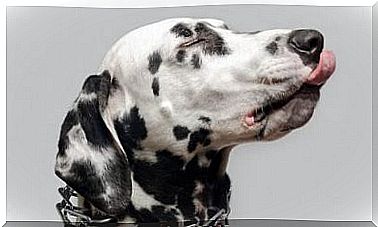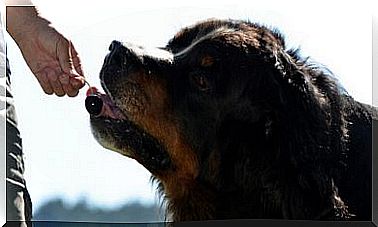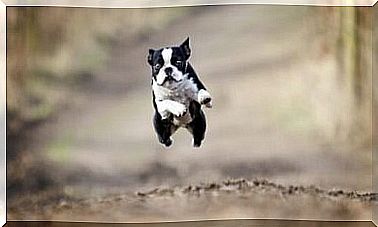What Is Hip Dysplasia In Dogs And How Is It Treated?
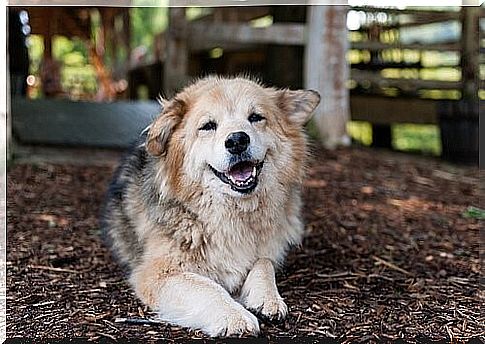
After a certain age, pets begin to suffer from certain diseases and disorders. Hip dysplasia in dogs is normal in some breeds, it is hereditary but not congenital (not present at birth). In the following article you will learn what hip dysplasia is in dogs and how it is treated.
What you should know about canine hip dysplasia
It is a disease that affects the bones and although it can appear a few months after birth, it is more common for it to appear after the animal is eighth birthday. Hip dysplasia in dogs is degenerative (it gets worse over time) and is caused by a malformation in the hip joint.
It can cause lameness, pain, and difficulty walking, sitting, or climbing stairs. It is usually bilateral, which means that it affects both hind legs equally. This problem is more common in large breeds such as the German Shepherd, Doberman, Labrador Retriever, Boxer, Dalmatian, and Irish Setter.
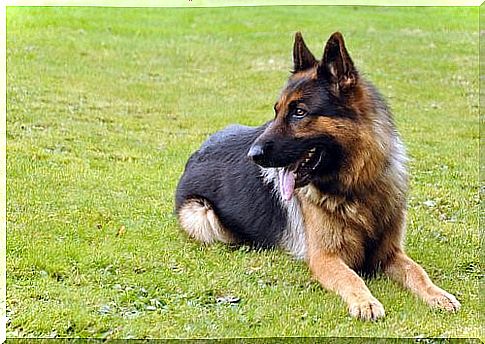
It also affects animals that are rapidly gaining weight and body volume. Hence, it is said that hip dysplasia in dogs can be caused by external factors such as diet, sedentary lifestyle, and obesity.
However, the main reason behind the disease is the genetic factor. A puppy who does not have dysplasia genes will never develop them, even if they are overweight or older. Depending on the amplitude angle between the two femoral heads, there are different degrees of severity:
- Easy: between 100 and 105 °
- Moderate: between 90 and 100 °
- Difficult: less than 90 °
How is hip dysplasia treated in dogs?
Although it must be diagnosed by a veterinarian after x-rays of the animal, the owner can identify dysplasia from some of his animal’s habits: difficulty standing after long lying down, excessive fatigue for no apparent reason, refusing. Climbing stairs or doing certain activities (e.g. jumping) runs very slowly and the hips are “lower” than usual.
Once the expert confirms that this is the disease, they can prescribe various treatments that will strengthen or relax muscles, relieve pain, and prevent (or delay such progression) the dysplasia further:
1. Massages
If the dog does not want to lean on either leg because of the pain it causes, muscle wasting can result. To reduce this problem, you can do massage to promote muscle regeneration and correct poor posture of the spine. The movement should be done with some pressure along the spine without the animal complaining of pain.
Massage the muscles of the hind leg with some friction. Do not touch the spine, but massage to the side of it.
2. Passive stretching
In many cases, canine hip dysplasia is operated on. After the intervention, the owner must do a series of passive exercises that will gradually improve the ability to move. This is used to correct joint malfunctions. The dog must lie still. After a light massage, stretches, rotations and flexions of the affected leg are performed.

3. Active exercises
In the second part of the postoperative treatment, the dog can move independently and slowly with a little help. That is why the stabilizing exercises, which, as the name suggests, help the animal to walk on its own, are very important. They consist of short walks and slow walking. The owner must hold him from behind (by the spine) to prevent him from walking sideways.
4. Hydrotherapy and Physiotherapy
Both of these can be very helpful when developing hip dysplasia in dogs. The hydrotherapy is perfect for water lovers like the Labrador, because it strengthens the muscles and improves the ability to move without putting too much strain on the animal. Physiotherapy has a similar effect, but it should always be done by a professional.


